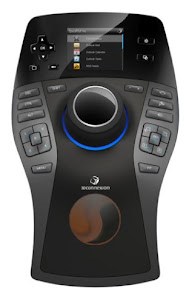Hi,
We have been regularly covering posts about making cheap and free calls to India. Lot of working ways to make free calls to different countries have been covered on this blog. Readers just need to surf the blog to find right deal for them.
Phones.com is #1 online phones comparision websites. I check their website and yes they have a huge listing of mobiles phones and price comparisions which actually proves very useful for people when buying a mobile phone. Apart from this mobile phones comparision, phones.com is offering web callback service.
Phones.com is offering each new user free trial credit worth 2.5 $ to test their service. This credit can be used to make free calls to anywhere in world to anywhere in world (yes you can make free calls to India).
Lets look at the prcedure to get free trial credit.
1. Visit phones.com. callback page. (Clicking on make a free test call at the top of homepage).
2. Now Register with Phones.com (provide your correct details)
3. Verify your email address by clicking on activation link.
4. Now in your account page, you will be asked t verify your mobile number.
5. Click for verification of your mobile. They will send you verification SMS.
You will then instantly get $2.5 free trial credit in your account. You can make use of this credit to test their service for making phone calls or sending sms.
After you have ended up your trial credit, and if you liked their service then you can buy more credit from phones.com and continue with them. Their call rates are very competitive. You can also buy sms credit to send sms anywhere in world.
One can add contacts to their account, also you can import contacts from your skype account.
Its actually a great launch by phones.com with a lot more features. Three cheers to phones.com
READ MORE - Free Callback Trial Credit by Phones.com
We have been regularly covering posts about making cheap and free calls to India. Lot of working ways to make free calls to different countries have been covered on this blog. Readers just need to surf the blog to find right deal for them.
Phones.com is #1 online phones comparision websites. I check their website and yes they have a huge listing of mobiles phones and price comparisions which actually proves very useful for people when buying a mobile phone. Apart from this mobile phones comparision, phones.com is offering web callback service.
Phones.com is offering each new user free trial credit worth 2.5 $ to test their service. This credit can be used to make free calls to anywhere in world to anywhere in world (yes you can make free calls to India).
Lets look at the prcedure to get free trial credit.
1. Visit phones.com. callback page. (Clicking on make a free test call at the top of homepage).
2. Now Register with Phones.com (provide your correct details)
3. Verify your email address by clicking on activation link.
4. Now in your account page, you will be asked t verify your mobile number.
5. Click for verification of your mobile. They will send you verification SMS.
You will then instantly get $2.5 free trial credit in your account. You can make use of this credit to test their service for making phone calls or sending sms.
After you have ended up your trial credit, and if you liked their service then you can buy more credit from phones.com and continue with them. Their call rates are very competitive. You can also buy sms credit to send sms anywhere in world.
One can add contacts to their account, also you can import contacts from your skype account.
Its actually a great launch by phones.com with a lot more features. Three cheers to phones.com








































